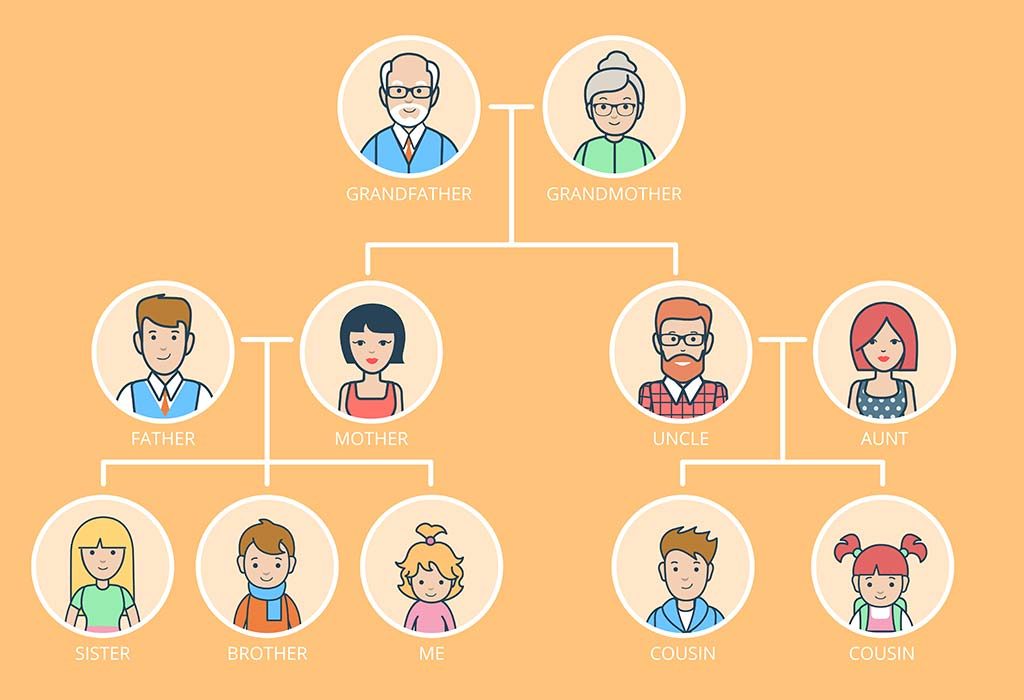


Remember that you can only go back so far because of the limited availability of reliable records. Visit libraries and online genealogy sources to search for census records, news stories, land deeds, and other documents that can verify your ancestry. Write down what you know, ask family members to fill in the gaps, and find pictures and documents. To create your family tree chart, start with some research. Kinship Diagram Template (Click on image to modify online) Kinship diagrams use basic symbols, lines, and letters to represent relationships to help you visualize your lineage. But note that if you simply want to chart relationships without digging too deeply, you may want to draw a simple kinship diagram instead. There is not a single family tree definition that dictates what has to be included or what the family tree should look like. Look at some examples of family trees to help you decide how your tree will be drawn. In nature, trees grow from the ground to the sky, but family trees can develop from the bottom up, the top down, or horizontally on paper or the computer screen. Do you want to add pictures of your ancestors to each leaf? Where can you find these pictures?Īlso, consider which direction you will draw the tree.What type of information do you want to include on each leaf (births, marriages, deaths)?.Is there somebody in your family who already has this information to give you a starting point?.Getting startedīefore jumping in and drawing your family tree, do a little planning. How far back you go and who you include is up to you. A more detailed family tree chart may include you, your parents, your siblings, aunts and uncles, cousins, and so on. It is a good way to pique your children’s interest so they will want to learn about ancestors and preserve family stories.Ī family tree can be as simple or as detailed as you want it to be.Ī simple genealogy chart may include you, your parents, your grandparents, and your great-grandparents.It is a good exercise for learning your family history in relation to historical events.It can help you trace genetics and family health concerns.It gives you a connection to your heritage.There are many reasons to make your own family trees: If you are interested in your ancestry or you would like to gain some insight into who you are and where you came from, you may want to create a genealogy chart. Each leaf represents individual family members with information such as birth, marriage, and death dates.Ī family tree diagram or genealogy chart makes it easy to record the people, places, and events that make up your family history and then share it with others. From the root, lines representing branches terminate in boxes representing leaves. Visually similar to an org chart, this diagram is usually presented in a tree structure starting with one individual as the root. A family tree is a visual representation of a person’s lineage, tracing relationships to common ancestors.


 0 kommentar(er)
0 kommentar(er)
